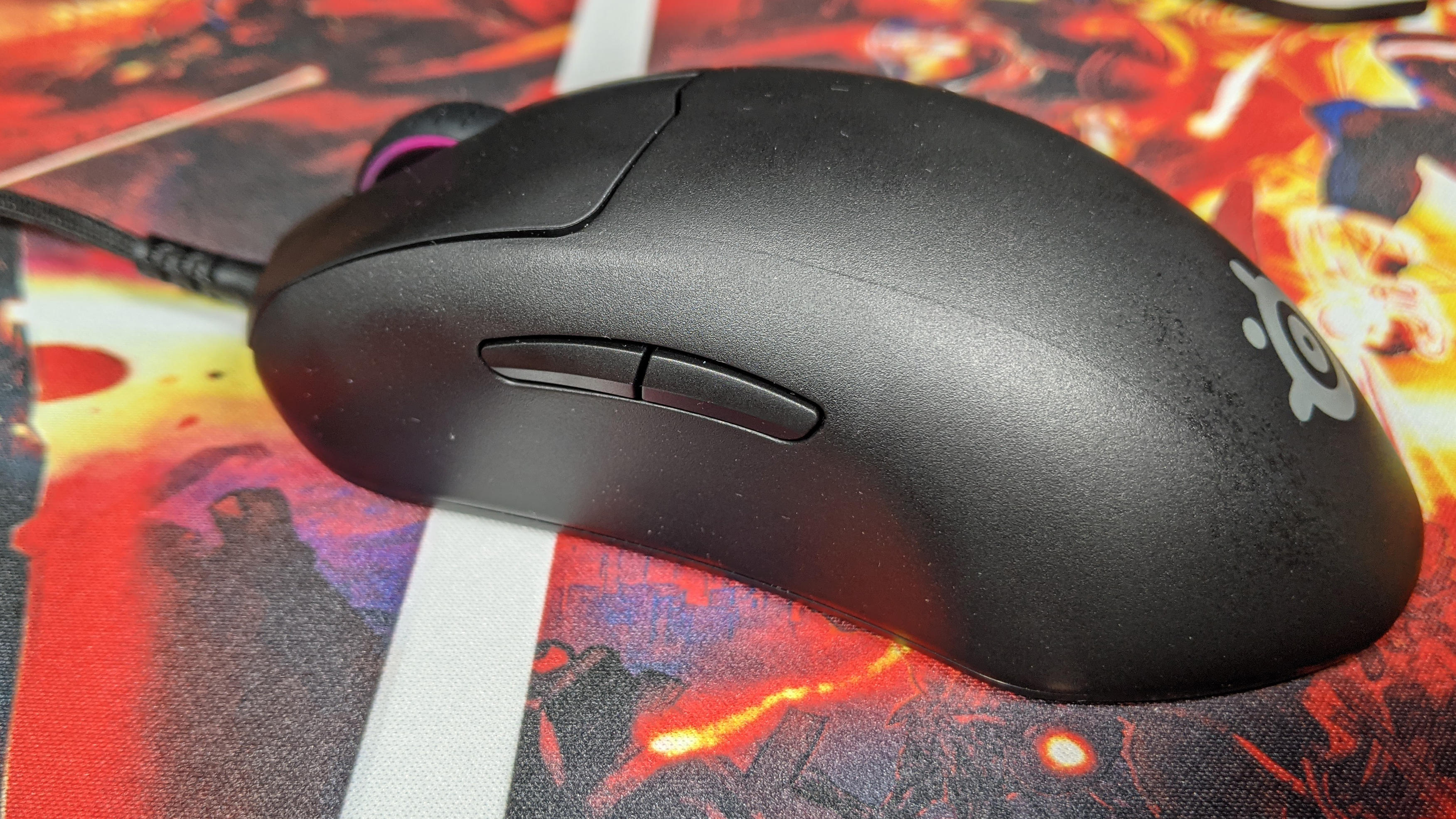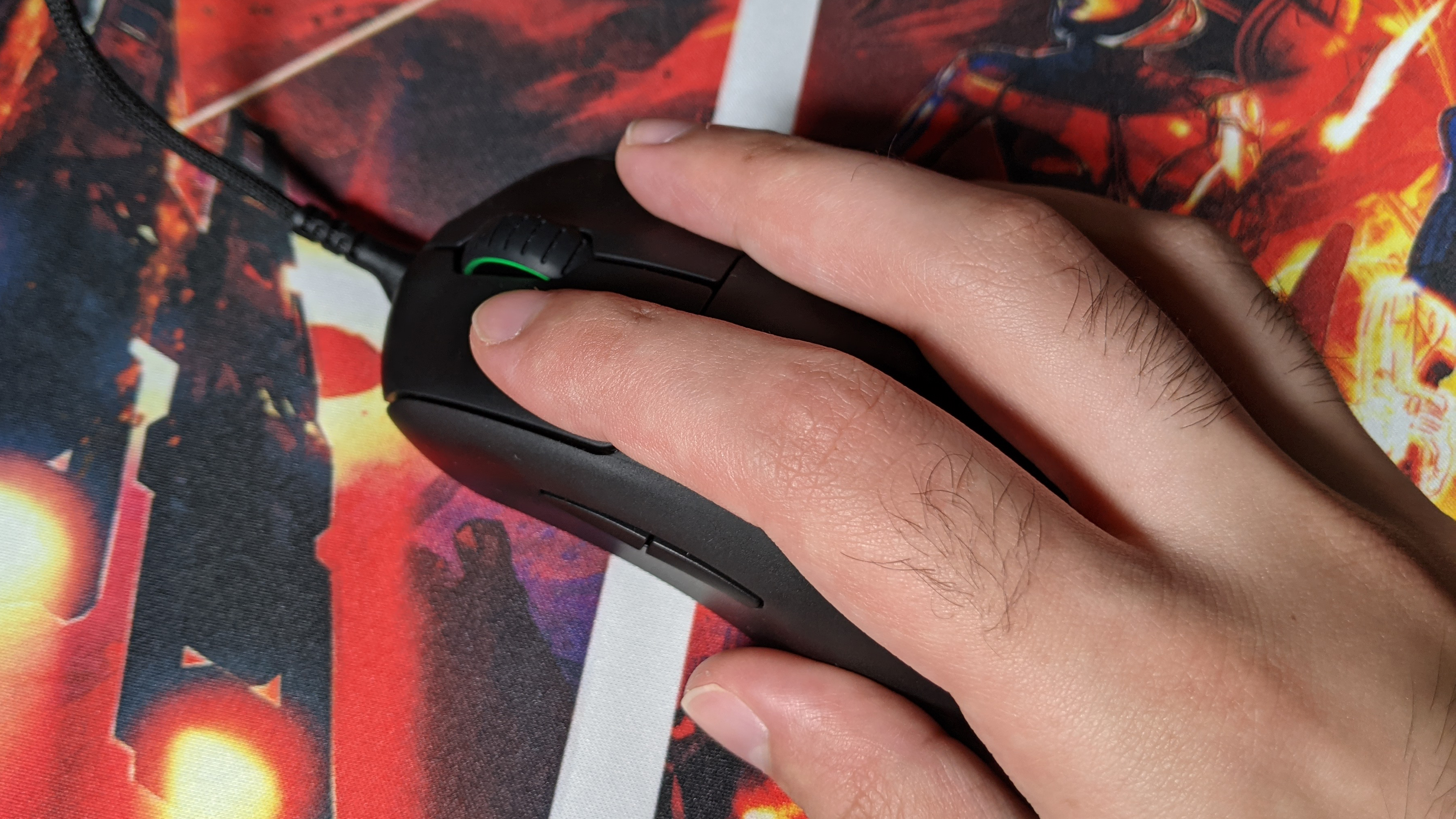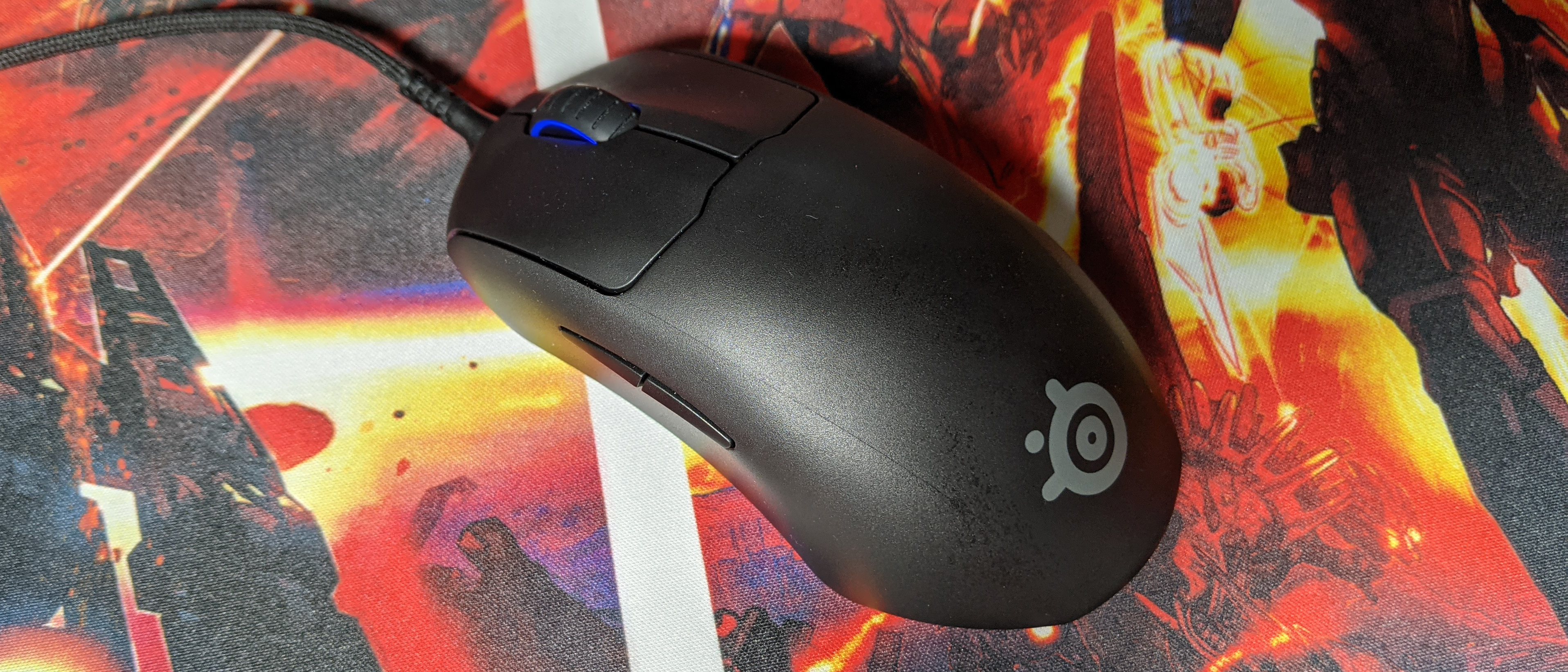Laptop Mag Verdict
The SteelSeries Prime+ gaming mouse boasts great performance packed into a lightweight design with convenient on-board settings, but more buttons would be nice.
Pros
- +
Great performance
- +
Solid software
- +
Ridiciously lightweight design
- +
On-board customizable settings
Cons
- -
More buttons would be nice
- -
No on-the-fly DPI button
Why you can trust Laptop Mag
SteelSeries makes some of the best peripherals around, and it did not disappoint with the Prime+.
For $79, this wired gaming mouse features great performance, a lightweight design and a sweet OLED display with customizable settings without the need of any software. As convenient as that is, the software you can download is great. The only issue is that there should be at least one more button outside of the standard ones, and there’s no on-the-fly DPI button.
But overall, the SteelSeries Prime+ slides in the ranks of the best gaming mouse that you can buy.
SteelSeries Prime+ design
SteelSeries’ new Prime lineup features a similar design, so like the SteelSeries Prime Wireless, the SteelSeries Prime+ boasts a discreet and sleek aesthetic. If it didn’t sport RGB lighting on the mouse wheel, you couldn’t tell it was a gaming mouse thanks to its simple black shell accented by a subtle SteelSeries logo. The size is identical to its wireless sibling, measuring 4.9 x 2.7 x 1.7 inches, but it is just slightly lighter, at 2.5 ounces (without the cable).

Due to the seamless matte-black design, it’s hard to see where the top panel starts and ends, but there is a slight V shape that forms the top panel. Above the SteelSeries logo lies two small clickers and an RGB-lit mouse wheel. Similar to the Prime Wireless, the Prime+ also does not have an on-the-fly DPI button at the top.
The subtle design carries over to the ergonomics; the left side of the mouse has a gently curved depression that acts as the thumb rest. Just above is a small two-button panel. Meanwhile, the right side of the mouse curves outward, designating space for the ring and pinkie finger.
While the Prime+ is a wired mouse, the wire isn’t permanently attached, and you can find the input for the microUSB at the front end of the mouse. If you want to know why the Prime+ has an edge over the Prime Wireless, look to the underside. Flipping the Prime+ over, you’ll find the black teflon feet, DPI button and, most importantly, the OLED display. That’s right, there’s an OLED panel on the underside (more on that later).
SteelSeries Prime+ comfort
The SteelSeries Prime+’s design is consistent with Prime Wireless, but that 0.3-ounce weight loss makes a difference. It felt even smoother to move around, despite having a wire attached. If you have long hands and love lightweight mice, the Prime+ will be super comfortable to you.

Surprisingly, the clickers on the Prime+ sound a bit different. They’re sharper and lighter. It’s more satisfying to click, but that depends entirely on your preference. I personally like it. Similar to the Prime Wireless, the mouse felt comfortable in my hand, but since there’s no bulge at the end, my palm sits on the desk as I’m using the mouse.
Despite the Prime+’s subdued design, the thumb rest provides more than enough space for my big finger, and the matte surface makes for a simple but comfortable texture. Like the Prime Wireless, the clickers above the Prime+'s thumb rest were stiff and clicks weren’t nearly as satisfying.
When looking at the right side of the Prime+, there’s no obvious section for your ring finger or pinky to rest on. The blank space is relatively comfortable, but it makes it difficult to lift the mouse off of the desk. Meanwhile, the mouse wheel is well placed and easy to use, but it feels cheap. It’s not anything special, which is disappointing for an $80 mouse.
SteelSeries Prime+ performance
Whether I was blasting fools with a shotgun or cutting them down with a blade, the SteelSeries Prime+ responded to each of my commands with ease, but extra buttons would’ve been nice.

I played Dark Alliance and the Prime+ was quick and responsive as I weaved through a number of foes before unleashing a torrent of arrows upon them. There wasn’t much aiming to do, but the Prime+ ensured that I was right on target nonetheless. It was easy to snap-turn to run away from a bunch of ice traps that blocked the way to loot.
I went back down memory lane in Resident Evil 2 in my second Leon playthrough, and the Prime+ was a solid companion as I took aim and blasted all of the zombie brains between me and my goal. The Prime+’s performance was vital when I was trying to dodge around Mr. X through the narrow hallways of the police station.
In Call of Duty: Warzone, I parachuted into the entrance of an open building right behind an enemy; upon landing, I flung the Prime+ 60 degrees to the left and unloaded my pistol accurately into someone's back. I’m not much of a keyboard and mouse player, but the Prime+ made it easy. Then I cleared my way through a supermarket and nailed quick headshots from across the isles on another fool trying to buy all of the toilet paper.
SteelSeries Prime+ features
Despite the price difference between the Prime+ and Prime Wireless, the former has some cooler tech, including that OLED display.

Similar to the Prime Wireless, the Prime+ packs optical magnetic switches, which creates consistency and precision so that every click actuates with the same amount of release force. These clickers are rated for 100 million clicks. It has a different sensor, called TrueMove Pro+, which SteelSeries claims has true 1-to-1 tracking. It is capable of 18,000 DPI, 450 IPS (inches per second) and 50G acceleration, which is slightly better than the Prime Wireless sensor. Additionally, it also features a lift-off distance sensor that ranges from 0.5 millimeters to 2.0 mm.
Now, let’s talk about that OLED display on the underside. You can control it with the DPI button, the mouse wheel and the clickers. With the display, you can adjust the settings for the DPI, polling rate, lift-off distance and illumination all without having mess with any software on your PC. This is an excellent feature for gamers who are always on the go, especially esports players.
You can also adjust those settings in the SteelSeries GG software. Within the app, you can customize all five programmable buttons and mouse-wheel directions, adjust the DPI, the polling rate, the acceleration, the deceleration, the angle snapping and lift-off distance. You can also adjust the RGB lighting of the mouse wheel in the same tab.
Bottom line
Despite being a wired mouse, the SteelSeries Prime+ kicks butt. Not only does it feature great performance with a fancy new sensor, but it also sports a super lightweight design and a sick OLED display that you can use to configure settings. However, it’s a bummer that it doesn’t have many buttons.
If you’re looking for a mouse with more buttons, you can spend a little more to get the Razer Naga Pro, which offers three swappable panels for FPS, MOBA and MMO games.
But overall, if you’re looking for a simple mouse with some cool features and a speedy sensor, the SteelSeries Prime+ might be for you.

Rami Tabari is the Reviews Editor for Laptop Mag. He reviews every shape and form of a laptop as well as all sorts of cool tech. You can find him sitting at his desk surrounded by a hoarder's dream of laptops, and when he navigates his way out to civilization, you can catch him watching really bad anime or playing some kind of painfully difficult game. He’s the best at every game and he just doesn’t lose. That’s why you’ll occasionally catch his byline attached to the latest Souls-like challenge.

